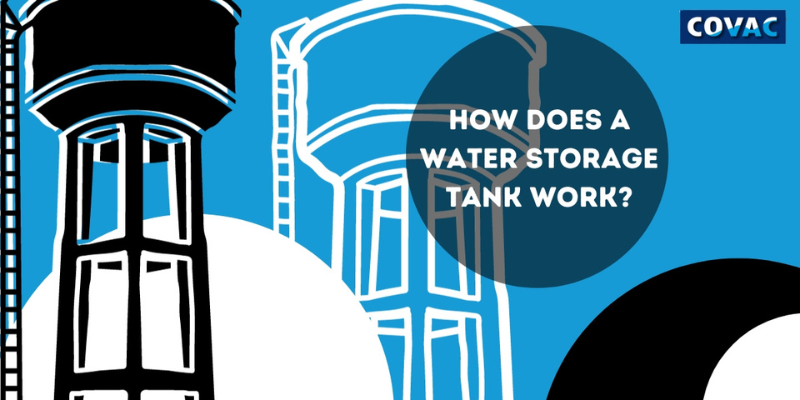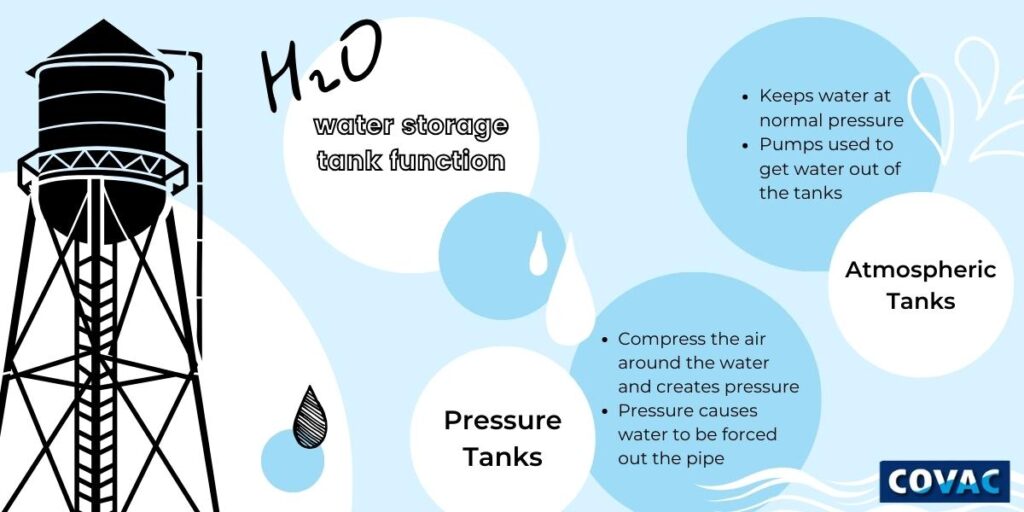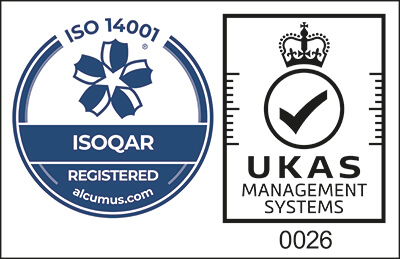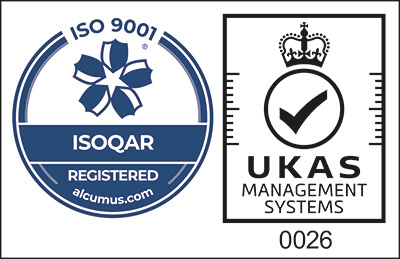Water storage tanks are used in various domestic and industrial settings to keep large quantities of water contained and healthy. Water tanks are made from steel or concrete, as those materials allow for water to be stored without immediate risk of corrosion and leaks.

But you might be asking yourself “How does a water storage tank work?”.
The process isn’t quite as simple as pouring water into a box and leaving it in there for months or years. This article will discuss the function of water storage tanks.
How Does a Water Storage Tank Work?

Water storage tanks work with pipes that feed water in and out of the tank. One pipe allows water to enter the tank and another one to exit. Water is introduced through a one-way check valve.
The pipe that allows water to enter the tank (depending on the type of tank) could be sourcing water from mains water, rainwater, etc. The water flows into the tank and will not leave until you operate the exit pipes. The water expelled to the exit pipes is sent either with pumps or through monitored air pressure. This process uses pressure switches to communicate with the check valve.
Depending on the intended purpose of the water, you could have multiple exit pipes. Domestic and drinking water tanks have pipes that feed water to cold-water taps and a separate set of pipes that send water to your hot water supply.
What are the Two Types of Water Tanks?

There are two ways that water could exit your storage tank, depending on the type of tank you have. Your water could expel using pressure or the outer atmosphere of the tank. Based on this the two popular types of water tanks are pressurised and atmospheric. Here are the differences between them:
Pressure Tanks
Pressure tanks don’t use pumps. Instead, they compress the air around the water, which creates a large amount of pressure. The more compressed air, the greater the water pressure. This amount of stress causes the water to be forced out of the pipes when it is needed.
Atmospheric Tanks
Unlike pressure tanks, atmospheric tanks don’t use air pressurisation at all. Atmospheric tanks keep the water inside at a normal pressure. This means that pumps must be used to get the water out of the tank.
The water tank will contain a ball valve to monitor the water level and prevent overflow. One of the most common reasons for water tank overflow is a faulty ball valve.
A check valve needs to be connected to the water pump to ensure that the water flows only in one direction. If the tank is overflowing, the check valve ensures that water will not be sent back to the source.
There should also be a boiler drain, which drains the tank of its water.
To communicate with the water source, water storage tanks use pressure switches to decide when to turn the water flow on and off.
How to Keep Your Water Tank Functional
If you want to keep your water tank working the way it should, regular maintenance and cleaning is key. Water tank lining can help protect your tank from damage and bacteria build up as a result of it, extending its life.
Here at COVAC, we specialise in water tank lining and relining using premium coatings designed for the purpose like ACOTHANE DW. We meet the necessary regulatory requirements set by the Water Regulations Advisory Scheme (WRAS) and HSE.
To get your tailored quote, fill out a form with more information about your water tank and a member of our team will be in touch.
Get In Touch!
Need expert advice regarding your water tank storage? Contact our team and we’ll be more than happy to answer any questions you might have.










